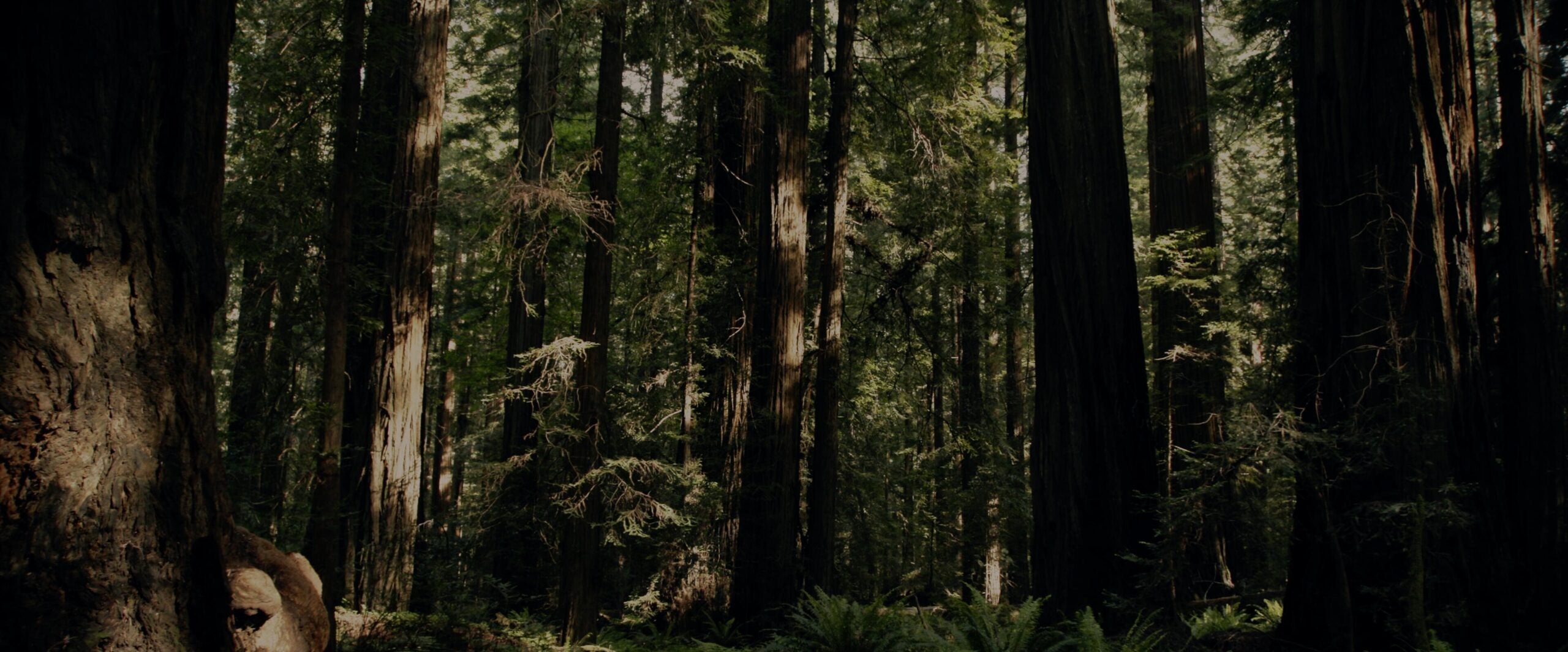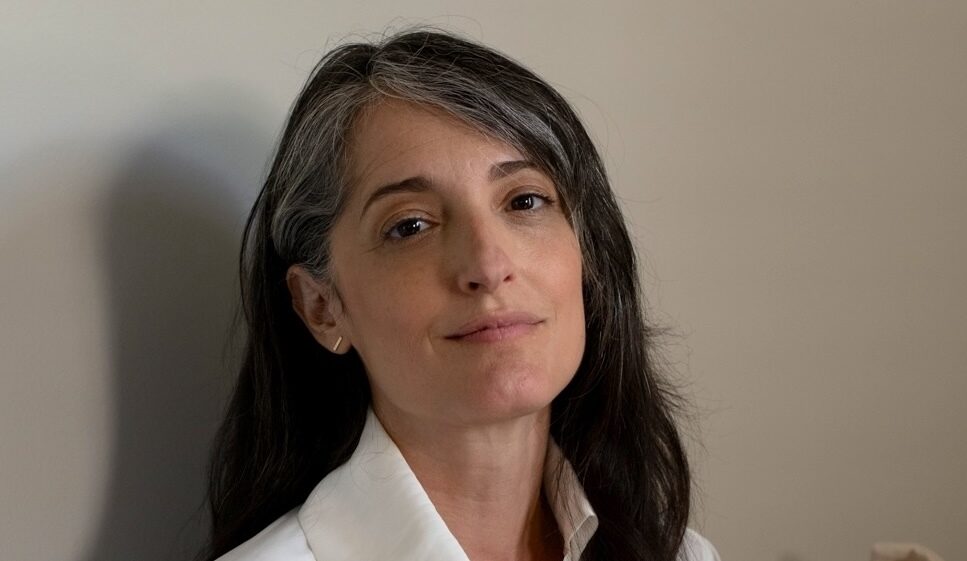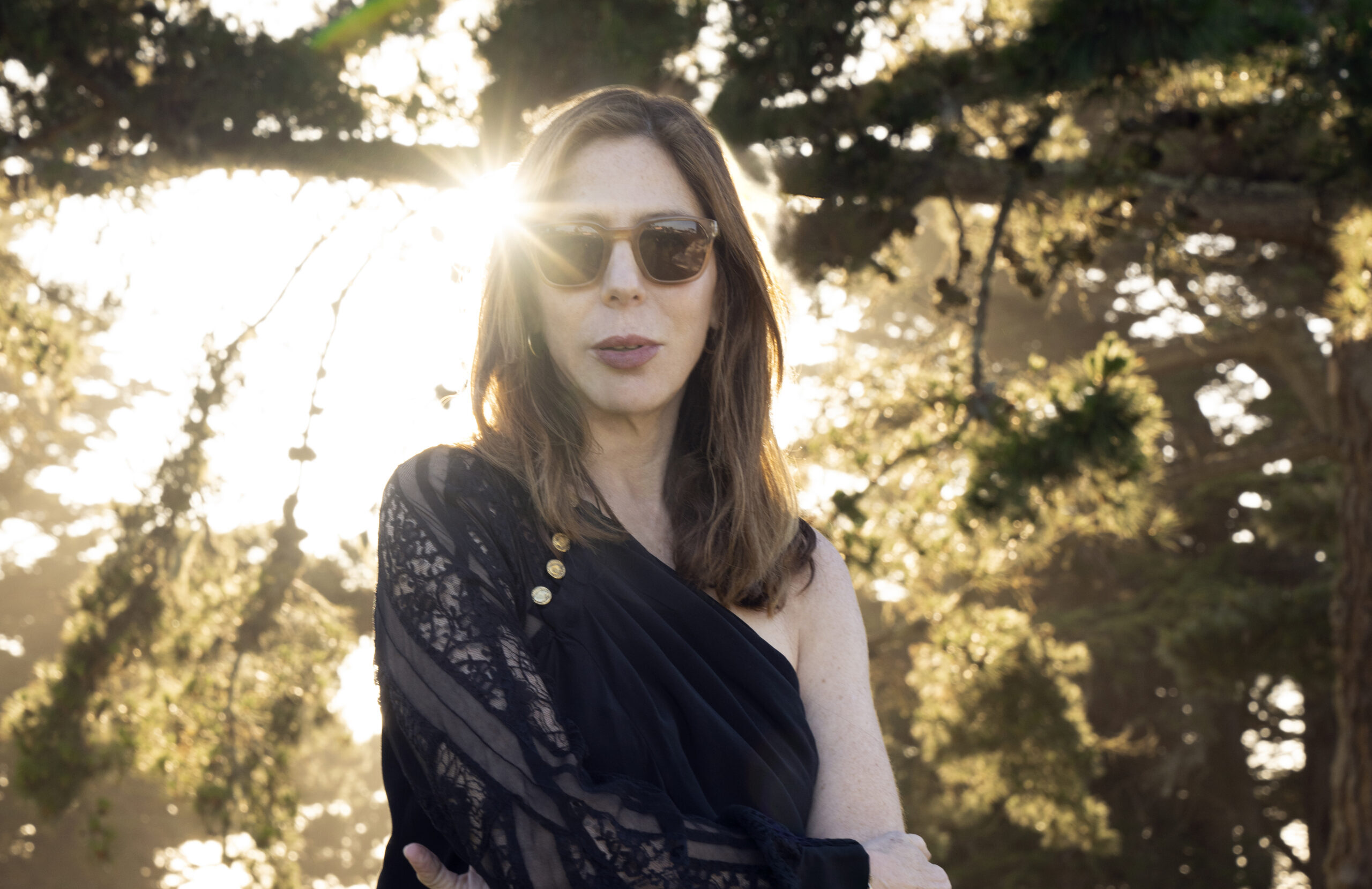Director Joshua Rofé on the suspenseful Hulu docuseries, “Sasquatch.” Also, legendary musician Richard Thompson shares memories that shaped his career. And the award-winning, acclaimed novelist Rachel Kushner talks about her essay collection, “The Hard Crowd.”
Featured in this Show
-
'Sasquatch' Explores 'Monsters Among Us'
Director Joshua Rofé remembers exactly how he became the director of the new Hulu docuseries, “Sasquatch.”
In February 2018, a friend told him about a podcast that he thought Rofé should listen to. The podcast, “Sasquatch Chronicles“, features people sharing stories about their encounters with the legendary creature also known as Bigfoot.
“To be honest with you, I wasn’t interested when he mentioned that. But he pushed. And so I listened to an episode,” Rofé told WPR’s “BETA.” “And then cut to four days later, and I’d listened to 11 episodes.”
Rofé was really struck by the “authentic, visceral fear that was being expressed and experienced by these people who were calling in with their Sasquatch encounter stories.” Over the next week, he had a conversation with himself in which he decided his next project was “going to be Sasquatch-centric in some way.”
But while Bigfoot documentaries are pretty standard TV fare, Rofé thought that if he could add another angle, he might be onto something special. So he reached out to his friend, gonzo investigative journalist David Holthouse.
“He’s the guy to reach out to if you’re looking for a wild story,” Rofé explained. “So I sent him a text and the text literally said, ‘Hey, this is the craziest text I’m going to send you for the next five years. I want to find a murder mystery that is somehow wrapped up in a Sasquatch story. And if it exists, pursue it as the next project.’ And he wrote me right back and he said, ‘I love it. I got one. I’ll call you in five.’”
[[{“fid”:”1483991″,”view_mode”:”embed_landscape”,”fields”:{“format”:”embed_landscape”,”alignment”:”right”,”field_image_caption[und][0][value]”:”%3Cp%3EInvestigative%20journalist%26nbsp%3BDavid%20Holthouse%20tracking%20leads%20on%20his%20phone%20in%20a%20scene%20from%20the%20docuseries%20%22Sasquatch%22.%20%3Cem%3EPhoto%20courtesy%20of%20Hulu%3C%2Fem%3E%3C%2Fp%3E%0A”,”field_image_caption[und][0][format]”:”full_html”,”field_file_image_alt_text[und][0][value]”:”A man holds a smartphone to his ear”,”field_file_image_title_text[und][0][value]”:”A man holds a smartphone to his ear”},”type”:”media”,”field_deltas”:{“1”:{“format”:”embed_landscape”,”alignment”:”right”,”field_image_caption[und][0][value]”:”%3Cp%3EInvestigative%20journalist%26nbsp%3BDavid%20Holthouse%20tracking%20leads%20on%20his%20phone%20in%20a%20scene%20from%20the%20docuseries%20%22Sasquatch%22.%20%3Cem%3EPhoto%20courtesy%20of%20Hulu%3C%2Fem%3E%3C%2Fp%3E%0A”,”field_image_caption[und][0][format]”:”full_html”,”field_file_image_alt_text[und][0][value]”:”A man holds a smartphone to his ear”,”field_file_image_title_text[und][0][value]”:”A man holds a smartphone to his ear”}},”link_text”:false,”attributes”:{“alt”:”A man holds a smartphone to his ear”,”title”:”A man holds a smartphone to his ear”,”class”:”media-element file-embed-landscape media-wysiwyg-align-right”,”data-delta”:”1″}}]]Holthouse told him about the fall of 1993 when he was a young reporter who needed a change of scenery for a while. He reached out to a friend working on a cannabis farm in Northern California who invited him to come out and join him.
“And so when David got there, he thought he was going to be arriving at a pretty mellow, relaxing location to let things calm down for a week,” Rofé explained.
“It was a terrifying energy that was in the air from the moment he arrived and on David’s second night there, he was in an A-frame cabin that was owned by this cannabis farm owner. And there was a phone call.”
The conversation was a little tense. About 15 minutes later, a truck’s headlights shone into the cabin. Two men entered; they were wet and covered in mud. One of them was talking very fast. As Holthouse says in the documentary, “his eyes are like the eyes of a panicked horse, you know, they’re rolling around. I was sketched out enough by this guy’s presence that I was just kind of trying to become one with the couch.”
The terrified men explained that further on up the mountain, three men had been murdered and all of the witness accounts matched up. These three men had been mangled and torn apart by a Sasquatch.
One area that’s especially steeped in the Sasquatch myth is Northern California’s Emerald Triangle — the three counties of Humboldt, Trinity and Mendocino. It also happens to be the region where most of the United States’ cannabis is grown. What is it about this area that keeps the legend of Sasquatch alive?
“I think it’s the woods out there,” Rofé said. “When you’re out in those woods, it feels prehistoric. And you get a few miles deep in those woods and you forget what life is like back in the city or the suburbs. And so I think if you’re out in the woods and you want to find something, that’s a place where you can really sort of lose yourself. Everything about that setting lends itself to the folklore.”
Rofé explained that the criminal element is very pervasive in these deep, dense, dark forests.
“It’s pretty lawless, there are not enough police officers, law enforcement agents to corral or control what’s going on out there,” he said. “It’s the Wild West, it really is. And there’s nobody to keep the peace. It’s the locals who lay down what the law is. And if somebody feels that you’ve crossed them in any way or done something that is not acceptable according to the way things work up there, you’re going to get killed and nobody’s even going to know where to look for you.“
Rofé admitted that he, his crew and Holthouse were often concerned for their safety while they were filming in the Emerald Triangle. The only exception was when they were filming with people from the Sasquatch community or people who had previously lived in that area in an effort to leave the grid and get back to the land.
“Filming with all those folks was totally safe,” Rofé said. “And they were all really wonderful, warm, welcoming people. But when we were exploring this sort of backwoods underworld, we were constantly aware of the fact that we were not safe and that we were already overstaying our welcome just by way of setting foot there.”
By exploring that danger alongside the omnipresent specter of a legendary monster deep in the woods, Rofé and Holthouse have created a blend of true crime and ghost story.
“If you dig at a ghost story for long enough, you might actually get to something that is even scarier and wilder than you anticipated,” Rofé said. “And I know that’s what our experience was making this. And so I hope that people can have of half of that experience watching it.”
-
'It Was All Guitars': Richard Thompson Reflects On His Life And His Early Career
Richard Thompson has recorded more than 39 albums. He is generally associated with British folk-rock, but his musical breadth covers so much more. Over his career, he has developed exceptional skills as a guitarist, songwriter and vocalist. It is no wonder that, even today, he is still quite popular as a touring artist.
As a child, Thompson was enchanted by the guitar and never looked back. He talked with WPR’s “BETA” about his lifelong musical journey and his new book chronicling his growth as a musician, “Beeswing: Losing My Way and Finding My Voice 1967-1975.”
“When I was growing up, it was all guitars,” Thompson said. “You know, first of all, my father had really good guitar records. He had Les Paul records. He had Django Reinhardt records, had Lonnie Johnson records of all things. And so I had that from the end of the spectrum. And then my sister, my big sister, was playing rock ‘n’ roll records when I was still quite young. So I was hearing Elvis and hearing, you know, Buddy Holly, a lot of Buddy Holly.”
“The guitar seemed like something that I should do myself, you know, it’s this very sexy thing. So I thought I should get a guitar,” Thompson continued. “And I started pestering my parents for probably about the age of 6, actually, and they followed me off with toys, really, until, like, a real one appeared in the house when I was about 10. And then I kind of took it like a duck to water and took classical lessons and then just played by ear, and I got an electric guitar when I was probably about 12 and took it from there.”
The title of Thompson’s memoir comes one of his songs called “Beeswing,” with lyrics he says are relevant to the period covered in the book.
“It’s a song of mine that, to my mind, encapsulates some of the things I felt about the 1960s and into the 1970s,” Thompson said. “It’s about people really dropping out, people not taking the path well-traveled, people not going into the family business, people not getting jobs in banks and accountancy firms. But people are really not going to university, dropping out, becoming drug dealers, becoming drug addicts in some cases, you know, joining communes, all that kind of thing. Taking to the road as well, you know, becoming itinerant. And I thought, you know, this song is a bit like that is what it’s about, people really falling through the safety net almost of society. So I thought it was a good reflection of the book.”
“Beeswing” covers a period when rock and pop music was still in an experimental period, and bands like Pink Floyd, The Crazy World of Arthur Brown, and Soft Machine were all bending genres and creating new sounds.
Thompson’s band, Fairport Convention, wanted to meld English folk and rock music, playing in that style with amplified instruments. Then, with the addition of vocalist Sandy Denny, Fairport’s path was set.
“She was a fantastic singer, so right at the front of the band. You had someone who was so good that you couldn’t help but play better,” Thompson said. “And when Sandy joined the band, she had been playing in folk clubs. And we thought that because we didn’t have a lot of rehearsal time, we kind of molded ourselves around some of these acoustic arrangements, and some were traditional songs. And this started us on a whole quest, really, to blend more British traditional music with contemporary instruments, with electric instruments. And that started us off, you know, on our mission, if you like.”
With Fairport Convention as the beginning of his career as a professional musician, Thompson continued to grow and develop as a songwriter, guitar player, and bandleader.
The Los Angeles Times described him as “the finest rock songwriter after Dylan and the best electric guitarist since Hendrix.”
Thompson was a member of Fairport Convention from 1967 to 1971.
In 1972, he recorded his first solo album, “Henry the Human Fly,” still considered by some to be one of his best recordings. Later that same year, he married Linda Peters, and together they recorded six albums over 10 years. He has continued as a solo performer, also touring occasionally with a band. Thompson says he’s looking forward to getting back on the road once the COVID-19 pandemic is finally over.
-
Author Rachel Kushner On Her Essay Collection, 'The Hard Crowd'
Author Rachel Kushner is one of the leading literary writers in the world. Her novels “The Flamethrowers” and “The Mars Room” have each garnered critical acclaim with the latter being shortlisted for the prestigious international Man Booker prize.
Kushner has now released an essay collection titled “The Hard Crowd” which culls together and updates a portion of her non-fiction output from the last two decades. Readers will immediately note Kushner’s command of language is just as precise as it is in her fiction. She tells WPR’s “BETA” that isn’t all that surprising.
“I think that, for better or worse, my writing does all seem to have a kind of recognizable voice or tone to it,” Kushner said. “In trying to please myself, I think I’m balancing a lot of different things in terms of wanting the writing to have a kind of verve and energy and, you know, even to be like a little bit crude or hopefully kind of sexy, but also, deal with things and employ a rigor that challenges me and brings me to a level of understanding that I did not possess when I sat down to write the thing.”
Kushner selected nearly 20 pieces from the last 20 years, dating back to even before she was published, that offer fans and general audience alike a glimpse into her process.
“I really enjoyed having the opportunity to re-examine the essays that I chose for the book,” she said. “They all had to kind of be talking to one another. So, I only chose maybe like a third of or a quarter of the essays that I’ve written that I feel would be good enough to fit into some kind of book.”
Kushner’s essays seem to be operating in two different gears. One set is eloquently written features about her personal history that are equal parts gripping and revealing. The other essays represent Kushner’s reviews of artists and authors whose work inspires or intrigues her. It’s the rare opportunity to have a literary artist lay out a commentary of their literary influences. It’s akin to having Martin Scorsese plan a film fest for you.
Take, for instance, her reprinted foreword to a collected edition of author Cormac McCarthy’s “The Border Trilogy.” Here is a modern master of wordsmithing marveling at McCarthy’s command of language.
“The ending of the first of that ‘Border Trilogy,’ ‘All the Pretty Horses,’ there’s this very strange image that McCarthy uses of the young cowboy riding up through the mountains of northern Mexico as he returns to Texas. And he pales into the landscape is the language that McCarthy has chosen for that,” Kushner said. “By the time you get to the end of that book, this idea of this boy paling into the landscape suggests that he has undergone a haunting transfiguration into a figure that augurs death and to me is a really magnificent moment.”
Kushner opens the collection with the phenomenal “Girl on a Motorcycle” which pre-dates any of her other published writing. The piece — which pulls its name from the 1968 film starring Marianne Faithfull and Alain Delon — deals with the illegal 24-hour motorcycle race across the Baja Peninsula from southern California to Tijuana.
“When I went to look at that essay, I knew I wanted it to open this collection and be the first thing, not because it was the first thing I published, but because it gives an account of who I was before I became a writer,” she said.
Against the compelling backdrop of competing in something this dangerous, Kushner shares her own personal journey of discovery and finding her place in this male-dominated subculture of gearheads.
“It’s about my experience riding in that race, which I only did once. And when I wrote it, I had still remembered the details of it were very fresh in my mind,” she said. “When I went to look at it, I thought, this is all so extreme. You know, was I exaggerating? I mean, I do make my living professionally by exaggerating in the form of fiction. So, I wanted to sort of run it by a couple of friends and let them tell me if the piece was realistic, because it all seemed pretty unbelievable. And I gave it to two people who still work and live in the world of motorcycles. And they’d both been on that race and said, ‘No, this is right, and this is what it was.’”
Kushner bookends the collection with another personal essay, the titular “The Hard Crowd.” It’s about living in San Francisco as a Gen Xer sandwiched between the city’s Haight-Ashbury past and its tech start-up center of the universe present.
Kushner is nostalgic, but realistic about revisiting this foundational era for her. As she travels down her Market Street memory lane, she shares how the people, places and events that shaped her often lead back to writers like Alan Ginsburg, Jim Carroll and even the Charles Willeford novel, “Pick-Up.”
“I discovered this novel, ‘Pick-Up,’ on somebody else’s bookshelves, which is the way I sometimes do my best reading in that it’s not a book I would have known to look at. And I started reading it one night. I was just totally mesmerized by this book,” recalled Kushner. “It takes place in a part of San Francisco, the Civic Center, where I spent a lot of time in my adolescence.”
Kushner also admits her remove presents a kind of paradox where the person who writes about their experiences is no longer the person who experienced them, as she writes in the book’s most meta moment:
“In all a writer’s supposed self-exposure, her claim to authentic experience, the thing the writer omits reporting on is her galling idea that her life might become a subject put to paper. Might fill the pages of a book.”
Fans of Kushner’s literary oeuvre will appreciate the mosaic of inspiration, appreciation and history she has assembled in “The Hard Crowd” and for the uninitiated, the collection serves as a fascinating entry point into one of America’s most intriguing writers.
Episode Credits
- Doug Gordon Host
- Adam Friedrich Producer
- Steve Gotcher Producer
- Steve Gotcher Technical Director
- Joshua Rofé Guest
- Richard Thompson Guest
- Rachel Kushner Guest
Wisconsin Public Radio, © Copyright 2025, Board of Regents of the University of Wisconsin System and Wisconsin Educational Communications Board.


